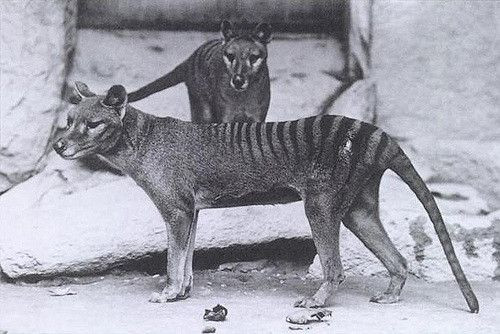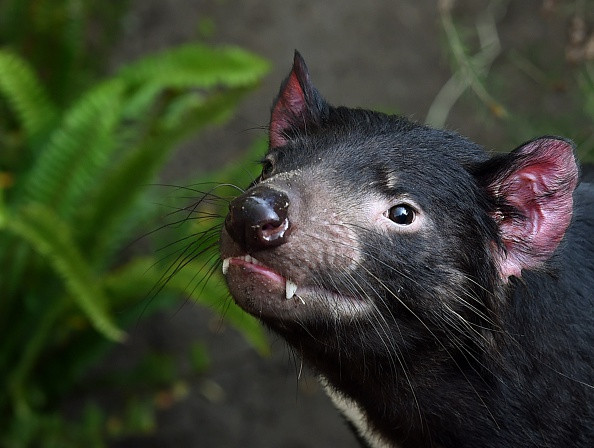Brain scans of extinct Tasmanian tigers reveal they were feared hunters
Comparing the brains of Tasmanian tigers and Tasmanian devils, scientists find evidence of behavioural differences.

The brain structure of Tasmanian tigers confirm that they were hunters and had a predatory lifestyle, unlike their closest-living relatives, Tasmanian devils, which are scavengers. Despite its name, the Tasmanian tiger was a carnivorous marsupial.
Also known as thylacine, the tiger is believed to have become extinct in 1936, when the last of its kind died in a zoo. A bounty scheme in place between 1830 and 1914 was largely blamed for its demise.
"We are not sure how many Tasmanian tigers were living on the island of Tasmania when the colonialists arrived in the 19th century. What we know is that they blamed the animal for the killing of their sheep, so they came up with a bounty scheme and Tasmanian tigers were hunted to extinction," lead author Gregory Berns, from Emory University, told IBTimes UK.
When Tasmanian tigers were alive, very little research was carried out to understand their behaviours and their ecology. Publishing their findings in the journal PLOS One, the scientists take a first in-depth look at the animals' brains, in the hope of closing this knowledge gap.
"Tasmanian tigers superficially resemble canids, but they are in fact marsupials. This makes it fascinating to compare their brains with that of other carnivores to learn about their hunting habits and replace them in their evolutionary context," Berns explained.
100-year-old brains
The research took two years to be completed because of the difficulty to collect brain specimens to study. Only four brains that belonged to thylacines are known to scientists, and the team was able to borrow and scan two of them. Both were approximately 100 years old.
The researchers compared these specimens with two brains of two Tasmanian devils, which were used for this analysis because they are the tigers' closest living relatives. One of the brain was also around 100 years old, but the other was that of a captive Tasmania devil that had died recently.
"Having this brain was useful because nobody had scanned animal brains that were that old before. The 'modern' brain allowed to control the effects of time and check that the Tasmanian Tigers' brains were not different because they are older," Berns says.

With the brain imaging technique they used, they were able to reconstruct white-matter pathways in 3D. These pathways are interesting to study, because they let scientists see neural connections and how different parts of the brain are connected with each other.
Tasmanian tigers' brains were bigger than those of Tasmanian devils, potentially because they were bigger animals. However, the fact they had relatively larger frontal lobes suggest may reflect behavioural differences between the two species, especially when it comes to hunting.
"The size of the frontal lobes suggests that they were intelligent animals, which is consistent with the fact that they had a predatory lifestyle – their relatively larger frontal lobes were needed to find and outwit their prey, to hunt them down."
Thus, these findings confirm the ecological niches of these two animals: Tasmanian devils are scavengers while Tasmanian tigers were hunters, with a foraging strategy that entailed more planning. Future research would focus on comparing thylacines with canids living in a similar ecosystem, such as dingoes.
© Copyright IBTimes 2025. All rights reserved.






















